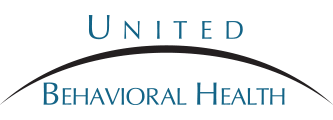Not everyone experiences child abuse the same way. Understanding the signs, symptoms and effects of child abuse is an important step toward recovery for your child.
Understanding Child Abuse
Learn about child abuse
Child abuse and neglect is defined by the Federal Child Abuse Prevention and Treatment Act as, “Any recent act or failure to act on the part of a parent or caretaker which results in death, serious physical or emotional harm, sexual abuse or exploitation [of a child]; or as an act or failure to act which presents an imminent risk of serious harm [to a child].” In other words, any time that a parent or caregiver mistreats a child in a manner that causes physical, emotional, and/or sexual harm, or neglects a child in a way which results in the failure to appropriately attend to a child’s wellbeing, he or she is the perpetrator of child abuse.
The presence of child abuse will inevitably have negative ramifications on all aspects of a child or adolescent’s life. Youth who are abused or neglected may begin to experience disturbances in their abilities to engage appropriately in social settings, to perform adequately in academic settings, and to adhere to various daily tasks and activities in a way that is expected of individuals of their age.
While nothing can erase the damage that is caused by child abuse and/or neglect, there are treatment options available that can help children heal from the psychological and emotional turmoil that has arisen as a result of the abuse, while also helping them to develop healthy coping skills that can assist them in facing future adversities with confidence.
Statistics
Child abuse statistics
There are many disturbing statistics regarding the prevalence of child abuse in the United States. Estimates have been offered stating that between three and four million reports of child abuse and neglect are made each year in the U.S. alone. Due to the fact that one report can include the abuse of more than one child, the summation of these reports are said to affect approximately six million children nationwide. According to the National Child Abuse and Neglect Data System, more than 9% of confirmed child abuse and neglect cases involve some type of sexual abuse. Furthermore, statistics that were compiled in August of 2014 concluded that an estimated 1,640 children died in 2012 as a direct result of maltreatment, which is an average of 31 children each week. Additionally, 77% of child fatalities were involved children under the age of four, and 42.4% were younger than one year old.
It must be noted, however, that the true prevalence of child abuse and neglect cannot be determined as countless children are subjected to these various forms of maltreatment without having the opportunity to report their abusers.
Types
Types of child abuse
There are a number of different types of child abuse that can be imposed upon children and adolescents, of which include physical abuse, sexual abuse, emotional abuse, and neglect. Brief descriptions of each are provided in the following:
Physical abuse refers to purposeful physical harm being inflicted upon a child by a parent, caregiver, or other person who is responsible for the child’s welfare. There are countless ways in which physical abuse can be imposed, including acts such as kicking, shaking, punching, hitting, suffocating, burning, and choking. Additionally, when a caregiver intentionally induces illness onto a child by poisoning or other means, it is also considered to be a form of physical abuse. Although consistently the topic of heated debate, spanking as a means of discipline is not considered to be physical abuse unless it inflicts bodily injury. That being said, when various types of discipline are imposed on a child that are not age-appropriate or are not appropriate to his or her physical condition, it is considered abuse.
Sexual abuse, in general, refers to any unwanted sexual activity that is forced on a person. In regards to children and adolescents, this form of abuse includes any act that is sexual in nature that an adult or older child forces a younger child to engage in. Sexual abuse can also involve exposing a child to sexual content that is inappropriate, including exposing oneself to a child, forcing a child to witness a sexual act, or forcing a child to look at pornography.
Emotional abuse refers to any type of maltreatment that results in psychological or emotional harm. There can be a number of behaviors that elicit emotional abuse on a child, but some such acts can include limiting appropriate physical contact with a child (e.g. not hugging, kissing, or providing a child with appropriate, nurturing affection), rejecting a child, ignoring a child, calling a child names, belittling a child, shaming a child, or intentionally humiliating a child are all various forms of emotional abuse that can render a child susceptible to experiencing lasting, negative psychological effects. Furthermore, exposing a child to the violence of others is considered a form of emotional abuse.
Neglect of a child refers to a parent or caregiver’s failure to provide a child with proper care in order to meet his or her basic needs. Denying a child appropriate food, shelter, clothing, and adequate supervision are all types of neglect. Additionally, when a child is intentionally denied the ability to have his or her medical or educational needs attended to, it is also a form of neglect.
Signs and Symptoms
Signs and symptoms of child abuse
The signs that may be exhibited by a child who has been the victim of abuse and/or neglect will inevitably vary depending on the specific type of abuse being imposed upon him or her, the length of time during which the abuse has been occurring, and the perpetrator of the abuse itself. Various types of signs that could be indicative of the fact that a child or adolescent has been subjected to abuse and/or neglect may include, but are not limited to, the following:
Signs of physical abuse:
- Sudden changes in behavior that are atypical for the child
- Drop in academic performance
- Presence of frequent injuries / chronic “accidents”
- Wearing clothes that are inappropriate for the weather in an attempt to hide the presence of physical injuries that have resulted from the abuse
- Displays a heightened startle response / flinches at sudden movement
- Shies away from physical touch
- Displays a fear of going home
- Becomes suddenly quiet when a particular parent/caregiver enters a room
Signs of sexual abuse:
- Changes in overall behavior
- Decline in academic performance
- Acts out in an aggressive manner
- Attempts to get other children to engage in sexual acts
- Regresses to behaviors that are typically displayed by children of much younger ages (e.g. thumb-sucking)
- Engages in self-harming behaviors
- Frequent bedwetting / incontinence
- Displaying a sense of irrational fear in regards to going to the doctor to have a physical examination
- Uses sexual words or phrases that are more mature that the child’s age
- Isolates oneself from family and friends
- No longer engages in activities that were once enjoyed
- Avoids certain people or situations
- Becomes excessively quiet when in the presence of a certain individual
Signs of emotional abuse:
- Oscillating behavioral patterns
- Gradual decline in academic performance
- Becomes socially withdrawn
- Acts in a manner that is inappropriate for his or her age (e.g. acting much older or much younger than he or she actually is)
- Is excessively compliant to the wishes of others
- Lack a sense of attachment to his or her parent/caregiver
- Displays a sense of emotional detachment from surroundings
Signs of neglect:
- Frequently absent from school / frequently late arriving to school
- Decline in academic performance
- Wears clothes that do not fit properly, are unclean, or inappropriate for the weather
- Lacks appropriate personal hygiene
- Noticeably underweight for age and height
- Does not receive medical care when ill
- Frequently left alone at home or is allowed to play in environments that are not safe
Effects
Effects of child abuse
Regardless of the type of abuse that a child is the victim of, he or she will undoubtedly be plagued by many long-term negative effects. These children tend to deserve a sense of worthlessness, coming to believe that they are inherently bad and therefore deserve to be abused in the way that they are. When the trauma of abuse is not addressed, and appropriate treatment interventions are not implemented, the effects of child abuse can last long into one’s adult years.
Studies have shown that children who are the victims of abuse and/or neglect are approximately nine times more likely to become involved in criminal activity at some point in their lives. Additionally, research has indicated that two-thirds of individuals who receive treatment for drug and/or alcohol abuse report having been abused or neglected when they were children. One study of 21-year-olds concluded that an astounding 80% who reported having experienced abuse during childhood met diagnostic criteria for at least one psychological disorder. Furthermore, when treatment is not sought in order to address the emotional trauma of having lived through such experiences, victims of childhood abuse often become the perpetrators of abuse themselves once they reach adulthood.
Additional examples of effects that can arise as the result of child abuse can include, but are not limited to, the following:
- Chronic feelings of guilt and shame
- Chronic feelings of hopelessness
- Onset of eating disorders
- Onset of developmental delays
- Onset of learning disorders
- Onset of other mental health conditions, including depression, anxiety, and PTSD, amongst others
- Communication disturbances
- Engaging in self-injury
- Teen pregnancy
- Lacking the ability to develop a sense of trust in others
- Academic failure
- Occupational failure later in life
- Lacking the ability to regulate emotions
- Hindered ability to obtain and maintain strong, healthy interpersonal relationships
- Heightened susceptibility to developing physical illnesses
- Irreversible physical injuries
- Suicidal thoughts and behaviors
Treatment
Treatment for child abuse
Inpatient and residential treatment centers are two beneficial options for children and adolescents to receive the intensive treatment they need as a result of being the victim of physical, sexual, or emotional abuse and/or neglect. In either of these settings, children have access to mental health professionals 24 hours a day, 7 days a week, who can provide them with the support and encouragement they need as they embark on the recovery process. By taking part in an inpatient or residential program, children are entering into an environment where they are safe from their abusers, no longer exposed to the stressors of the outside world, and can therefore place all of their time and energy into the healing process. Additionally, by taking place in either of these programming options, children will come to meet other children who may have experienced similar traumas, providing them with a sense of comfort in knowing that they are not alone and that there are other people who have somewhat of an understanding of what they have gone through. In either of these settings, children can process through their experiences with a qualified mental health professional, engage in group therapy where support can be received from peers, learn about the importance of healthy relationships and boundary-setting, develop coping skills, and find the confidence needed to achieve true healing and lasting recovery.









